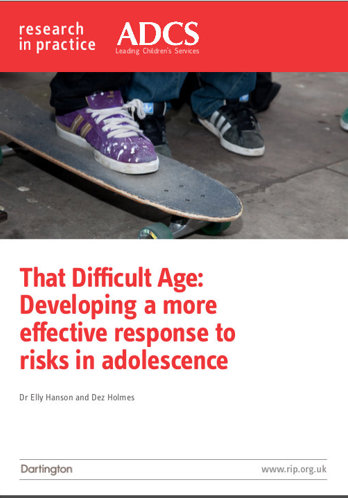That Difficult Age: Developing a more effective response to risks in adolescence: Evidence Scope (2014)
Looking at the serious and negative risks that face some adolescents in the UK today, focusing on neglect, running away, sexual exploitation and offending.
Reflective questions and practice implications
This resource shines a light on the serious and negative risks that face some adolescents, and which interact to increase their vulnerability, including neglect, running away, sexual exploitation and offending.
Considered together, common themes can be drawn out to inform a distinctive adolescent-centred approach to protection, prevention and the promotion of adolescent resilience.
- The ways in which young people may have adapted to types of harm experienced in earlier childhood can increase the risk of harm in adolescence.
- Significant adversities in earlier childhood can leave young people with unmet needs that they seek to meet via risky routes in adolescence.
- Harnessing and working with adolescent choices and behaviours is essential to them keeping safe.
- Adolescent ‘choice’ is sometimes misinterpreted as rational informed choice akin to that of adult decision-making. Conceptualising adolescent choices as ‘lifestyle choices’ can lead to victims of harm being denied appropriate support.
- Engagement is more likely when practitioners: a) focus on and work with an adolescent’s strengths; b) have support in understanding what factors might be influencing the salient risks; c) ‘go with the grain’ of adolescent development and use it as a strength; and d) start with the young person’s needs, goals, values and aspirations.
- How can you incorporate the ‘Principles to Improve Responses to Adolescent Risk’ (set out on Section 9) into your practice with adolescents?
Professional Standards
PQS:KSS - Communication | Child development | Abuse and neglect of children | Child and family assessment | Analysis, decision-making, planning and review
PCF - Values and ethics | Rights, justice and economic wellbeing | Critical reflection and analysis | Intervention and skills

